You need to exercise more. That’s the message you likely hear on a daily basis. Since a large part of the country struggles with obesity, encouraging people to get more exercise seems like an obvious step.
For many people, this means more walking, jogging, cycling, or other cardio-focused activities that get their heart rate moving and calories burning. Cardio certainly has its health benefits, but there comes a point when you might be doing too much.
In fact, doing too much cardiovascular exercise may actually be preventing you from getting the fitness results you’re looking for. Here are four indicators that suggest you may be doing just that, as well as one simple solution that will get you back on the right track:
1. Your body desperately holds on to fat.
When it comes to shedding fat, a lot of people simply ramp up their cardiovascular exercise. However, the positive fat-burning effects of cardio exercise are short-lived. Once you stop exercising, your body’s metabolism quickly returns to its normal state. If cardio is your go-to exercise, you’re forced to do more and more in order to see ongoing weight-loss results.
This becomes problematic because increased cardio training can lead to decreased muscle mass. If your body loses even the slightest bit of muscle, your resting metabolic rate (i.e., how many calories you burn when you’re NOT exercising) dips even further. Your body will begin to shed fat even more slowly … unless you do even more cardio. It can become quite a vicious cycle!
2. Your body doesn’t look toned.
Using cardio exercise as your primary form of exercise can help you lose weight but still leave you with a soft, undesirable physique.
Your body composition (i.e., the ratio of fat to lean tissue) determines the shape your body takes. Reducing your body fat while simultaneously reducing your lean muscle tissue (as we know cardio training can do), may actually prevent your body composition from changing at all!
3. You’re plagued by chronically sore joints.
Many forms of cardiovascular exercise can lead to both minor and major overuse injuries. Your body takes a pounding through the ankles, knees, hips, and lower back when you run. Cycling promotes poor posture in your shoulders and back. Even swimming, a form of cardio that is supposed to be joint-friendly, can cause shoulder issues over time.
Listen to your body. How do your joints feel on a day-to-day basis? If you are dealing with chronically achy or creaky joints, then your body might need a change of pace.
Chronic joint soreness develops gradually so it can be easy to overlook. You might not suddenly notice a drastic change in how your body feels, but cardio overload may be taking a toll on your joints without you realizing it.
4. You’re always tired.
Exercise is a form of stress — it is physical stress. Stressing your body with exercise is what leads to physical improvements over time. However, your body also has a finite capacity to deal with stress of any sort. Put your body through too much cardio training during a time when you’re dealing with other stressors (e.g., at work or in relationships) and your body will not be able to cope.
Oftentimes, the first symptom of being over-stressed is a noticeable decrease in energy. Your body cannot recuperate from your demanding cardio training while simultaneously dealing with other life stressors. As a result, you get tired, worn out, and become susceptible to illness and injury.
5. The solution is to add strength training into your routine.
If you’re experiencing any of these four symptoms of cardio overload, it’s likely time to consider switching up your exercise routine. Strength training is the perfect complement to cardiovascular exercise.
First, strength training helps your body maintain muscle mass. Increased muscle will boost your resting metabolic rate and will help your body develop a more aesthetically appealing physique.
Second, adding strength training to your exercise routine will provide the variety needed to avoid overuse injuries commonly associated with cardio-only training routines. Building strength will also support your joints, making them even less likely to suffer from chronic soreness or future injury.
Finally, the slower pace of strength training can be much less of a stressor to your body than constant cardio training. Replacing even two days of cardio training per week with a resistance workout can reduce the physical stress your body has to deal with and can therefore restore your energy levels.
Cardio training is excellent for your overall health, but balancing it with strength training will help you achieve faster results in a way that’s sustainable for the long-term.
Article Source: makeyourbodywork.com

